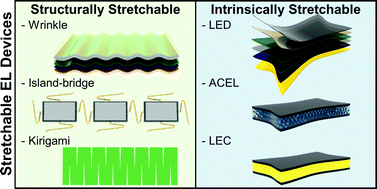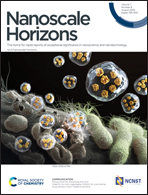Materials and design strategies for stretchable electroluminescent devices
Abstract
Stretchable displays have recently received increasing attention as input and/or output interfaces for next-generation human-friendly electronic systems. Stretchable electroluminescent (EL) devices are a core component of stretchable displays, and they can be classified into two types, structurally stretchable EL devices and intrinsically stretchable EL devices, according to the mechanism for achieving their stretchability. We herein present recent advances in materials and design strategies for stretchable EL devices. First, stretchable devices based on ultrathin EL devices are introduced. Ultrathin EL devices are mechanically flexible like thin paper, and they can become stretchable through various structural engineering methods, such as inducing a buckled structure, employing interconnects with stretchable geometries, and applying origami/kirigami techniques. Secondly, intrinsically stretchable EL devices can be fabricated by using inherently stretchable electronic materials. For example, light-emitting electrochemical cells and EL devices with a simpler structure using alternating current have been developed. Furthermore, novel stretchable semiconductor materials have been presented for the development of intrinsically stretchable light-emitting diodes. After discussing these two types of stretchable EL devices, we briefly discuss applications of deformable EL devices and conclude the review.

- This article is part of the themed collections: Celebrating International Women’s Day: Women in Nanoscience and Nanoscale Horizons Most Popular 2022 Articles


 Please wait while we load your content...
Please wait while we load your content...